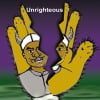By Shaina NC
In a country that has seen much communal strife, the under- draft Prevention of Communal and Targeted Violence Bill, 2011, is remarkable for its brazen determination to discriminate against a vast majority of people in this country.
We will not be debating here the extra- constitutional nature of the National Advisory Council ( whose brainchild this bill is) as thats a subject of intense debate itself. The discriminatory nature of the bill strongly cements the perception of minority appeasement for electoral gains. But thats something we’ve come to expect from many political parties that have turned appeasement into a fine art.
First, a ‘victim’as per this bill is not a standalone descriptor, but includes a modifier of belonging to a ‘group as defined under this bill’. And a ‘group’is defined as a religious or linguistic minority in a state of the Union, or a scheduled caste or tribe as defined in Article 366 of the Constitution. This seems a wilful restrictive description of victimhood, and casts serious aspersions on the intent behind the proposed legislation. It clearly indicates a sinister agenda to tilt the scales in favor of a specific community to the detriment of the majority in the country, thus violating a basic tenet of equality before the law, as enshrined in Article 14 of the Constitution. There is also another inherently fallacious assumption here, that the members of the majority community cannot be the victims of communal violence, and therefore not deserving of the legal redress and reparation that such instances warrant.
To illustrate, the victims of the violence that followed the Godhra coachburning incident are legitimate victims under this bill, but not those who were fried alive when the coach was set afire. This also means that even if rape is committed by a member of the minority community against a woman member of the majority community during the course sectarian violence, the victim is not a victim under the provisions of this bill. Doesn’t this create massive opportunities for misuse and settling personal scores? Isn’t this a mirror image of the draconian Hudood ordinances in Pakistan, something that we all like to castigate with all the intellectual and argumentative might at our disposal? Another incendiary ingredient of the proposed bill relates to provisions of evidence under sections 73 and 74.
In essence, these provisions presume that if hate propaganda or violence is committed or abetted or conspired by a member of the majority community against member( s) of a group, it is because of the latters belonging to such group. The clever legalese behind such drafting may not be entirely visible to most of us, but heres an illustration.
Even in a personal dispute thats devoid of any communal colour, a member of the ‘group'( as defined under this bill) can lodge a complaint at the nearest police station under the provisions of this bill against a member of the majority community, and it would be the responsibility of the latter to prove his/ her innocence. In other words, a person will be deemed guilty unless proved otherwise. Doesn’t it contravene the democratic principles our country stands for? The members of the NAC drafting this bill, and their political masters seem to have deliberately overlooked several shameful incidents in Indias recent history, of which a few are worth mentioning here. Do they recall the horrendous plight of more than 4 lac Kashmiri pandits, who were driven away from their ancestral homes, and confined to living at neardestitution levels in squalid camps? Wasn’t this another manifestation of ‘ethnic cleansing’and gross violation of human rights? But then Kashmiri pandits do not constitute a ‘monetisable’vote- bank. One of the greatest atrocity committed against members of the majority community was at Noakhali in 1946, where more than 5,000 innocent people were butchered, their women raped, and thousands forced to convert.
A little further back, we have the instance of thousands butchered in Kerala by the Moplahs, with the Indian National Congress seeking to legitimize the pogrom as a class struggle.
Any piece of legislation in a country as wide and diverse as ours must be based on the abiding principle of equality, and it must comprise robust safeguards against misuse. The proposed bill fails miserably on both counts. It smacks of blatant partisanship, and a thought- process so twisted that it can stem only from people with a dangerously skewed mindset.
It potentially sows the seeds for decades of sectarian violence, thus setting back the country and all our advancements in various social and economic fields. An ideal piece of legislation must endorse a uniform code of conduct, irrespective of the perpetrators or victims religious or linguistic status.
But even that seems quite utopian in the current scenario.
Source: Free Press Journal
Also See
 |
Grave sins of Congress are driving India to doom!
Highest sins of the Congress which is taking the country to Hell and of all political parties who are doing nothing about it but just letting that happen ! |
 |
Know more about Draconian Anti- Hindu ‘Communal Violence Bill’
Sonia Gandhi headed Un-constitutional NAC has drafted ‘Prevention of Communal & Targeted Violence Bill’ to destroy Constitutional rights of Hindus.
|





